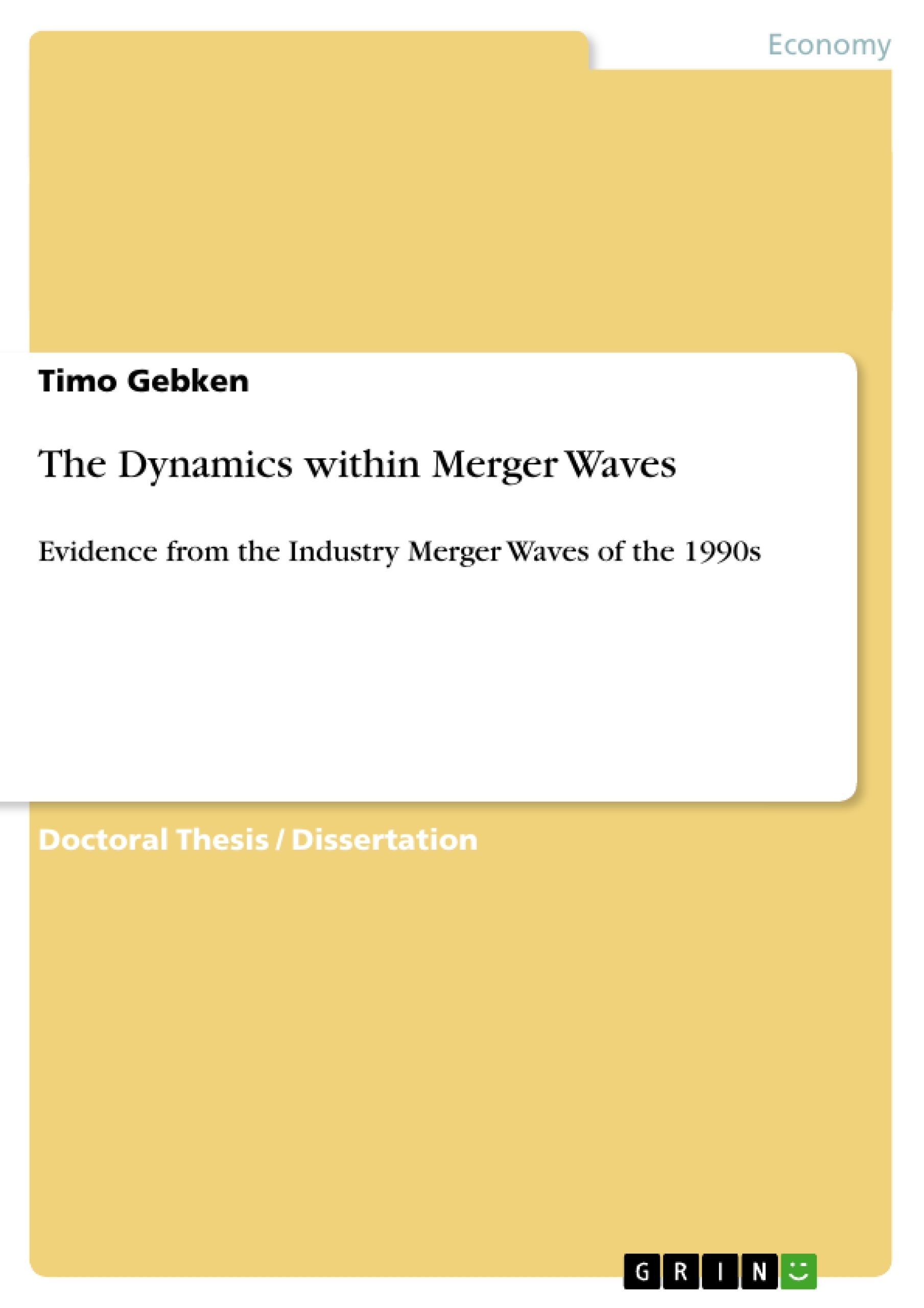Empirical corporate finance research analyzes the link between major corporate decisions and the shareholder value development of the respective companies.
Enhancing the welfare of shareholders is a fundamental and common objective of all firms and corporate managers are required to implement policies consistent with shareholder welfare. However, the financial literature shows that major corporate decisions are not associated with stock market gains to the respective companies. Especially, the mergers and acquisitions related literature shows that the returns to bidding firm shareholders are essentially zero when they pursue an acquisition. Due to these empirical results, there is an ongoing debate why so many value decreasing decisions occur and how the success of corporate actions is related to company specific internal characteristics and the firms’ external environment. Timo Gebken’s dissertation contributes to this debate.
Timo links the time series behavior of industry specific M&A activity to the shareholder wealth effects of the transactions. The majority of deals within an industry occur in very short time periods, so called industry merger waves. These industry merger waves are characterized by a fast consolidation process, which drastically changes the competitive environment for all firms within the industry. Timo analyzes how and why this rapidly changing environment influences the shareholder wealth effects of M&A activity. His results show that the gains associated with transactions change dramatically during an industry merger wave. At the beginning of an industryspecific consolidation process, mergers and acquisitions are accompanied by significantly positive returns to the merging firms and by positive intra-industry effects. In contrast, at the end of an industry merger wave, the shareholder wealth effects are significantly negative. To explore the reason for these results, Timo links the gains to the merging firms to the respective intra-industry effects and to key target characteristics. He shows that targets often possess very scarce resources towards the end of an industry merger wave. The corresponding increased competition for the “last”
targets leads to increasing competitive effects at the intra-industry level and to higher premiums paid by bidding firm shareholders. Due to these mechanisms, the gains associated with M&A activity decrease significantly as an industry-specific consolidation process continues.
Inhaltsverzeichnis (Table of Contents)
- Introduction
- Background and objective
- Organization of the dissertation
- Literature review
- Motives of M&A transactions
- Aggregate and industry-specific merger waves
- The success of M&A transactions
- The determinants of the transaction success
- Intra-industry effects of mergers and acquisitions
- Summary
- Abnormal returns within merger waves
- Data
- Abnormal returns to bidders and rivals within merger waves
- Summary
- The robustness of the wave effect
- Bidding firm and deal characteristics in merger waves
- The robustness of the wave effect to bidding firms
- The robustness of the wave effect to rivals
- Summary
- The explanation for the returns within merger waves
- Transaction motives at different stages of merger waves
- The competitive advantage theory and the wave effect
- Other merger-related theories and the wave effect
- Summary
Zielsetzung und Themenschwerpunkte (Objectives and Key Themes)
This dissertation investigates the relationship between industry-specific merger waves and shareholder wealth effects. The study analyzes the dynamics of mergers and acquisitions (M&A) activity within industries, focusing on how the changing competitive environment during merger waves influences the financial outcomes for participating firms.
- The impact of industry merger waves on shareholder returns
- The determinants of transaction success during merger waves
- The role of competitive advantage theory in explaining the wave effect
- The relationship between intra-industry effects and shareholder wealth effects
- The significance of target characteristics in shaping M&A outcomes
Zusammenfassung der Kapitel (Chapter Summaries)
The dissertation begins by providing a comprehensive literature review of the motives behind M&A transactions, the dynamics of aggregate and industry-specific merger waves, and the success of M&A transactions. It examines various theories, such as the competitive advantage theory, and explores the relationship between intra-industry effects and shareholder wealth effects.
The study then delves into an empirical analysis of abnormal returns within merger waves, focusing on the returns to bidding firms and rivals. Chapter 3 examines the data and methodologies used to analyze the returns, while Chapter 4 assesses the robustness of the findings.
Finally, the dissertation explores potential explanations for the observed returns within merger waves. It investigates the transaction motives at different stages of the merger wave and examines how various theories, including the competitive advantage theory, can shed light on the wave effect.
Schlüsselwörter (Keywords)
This dissertation focuses on the dynamics of industry merger waves, shareholder wealth effects, competitive advantage theory, intra-industry effects, and the success of M&A transactions. The study utilizes empirical analysis and theoretical frameworks to understand the complex relationship between these factors.
- Quote paper
- Dr Timo Gebken (Author), 2008, The Dynamics within Merger Waves, Munich, GRIN Verlag, https://www.hausarbeiten.de/document/122448


